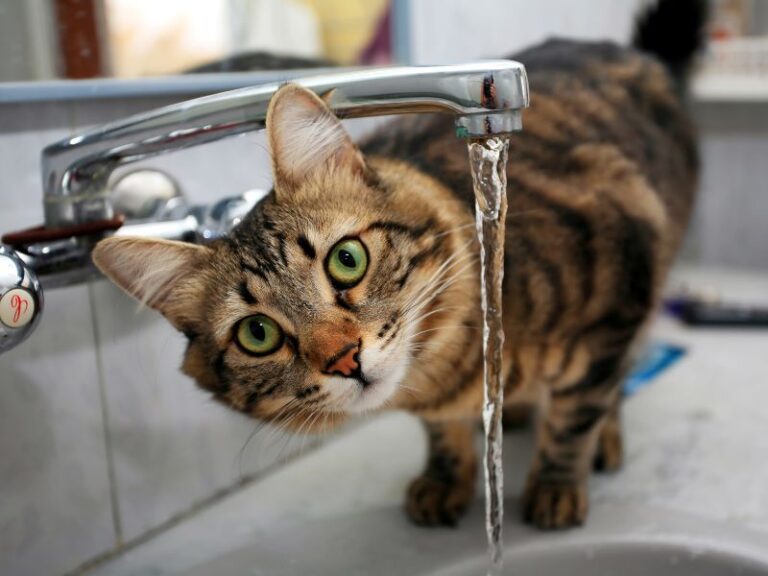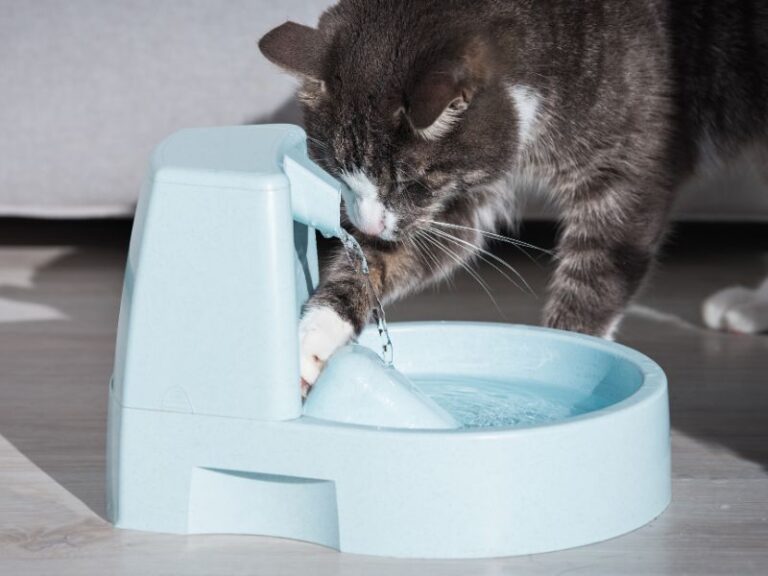Table of Contents
ToggleWelcoming a new member to the family is an exciting time, but it also comes with its share of concerns, especially when you already have a beloved feline friend at home. Introducing cats and babies for the first time requires careful planning and consideration to ensure a smooth and harmonious transition. In this article, we’ll explore the essential steps to create a safe environment for your cat and newborn, fostering a positive and loving relationship between them. Let’s dive in and discover the joy of having cats and babies grow up together!
Preparing Your Home for the Introduction
Welcoming a new baby into your home is an exciting time, but it’s essential to ensure a smooth and safe introduction between your cat and the newest member of the family. Cats are creatures of habit and can be sensitive to changes in their environment. Therefore, it’s crucial to take the necessary steps to create a positive and stress-free environment for your feline friend as you prepare to introduce them to the baby. Here are some essential tips for preparing your home:
Creating Safe Spaces for the Cat
- Designate a Quiet Retreat: Cats appreciate having a space where they can retreat to when they need a break from noise or commotion. Before the baby arrives, designate a quiet room or area in your home where your cat can relax and feel safe. Ensure this space is off-limits to the baby and other household pets.
- Provide Elevated Perches: Cats love to have a vantage point where they can observe their surroundings. Consider installing cat shelves or providing elevated perches so that your cat can have a view of the room from above. This will help them feel secure and in control.
- Maintain Familiarity: As you rearrange furniture or make changes in the nursery, try to keep your cat’s belongings, such as their bed, toys, and scratching posts, in their usual spots. Familiar scents and objects will provide comfort and stability during this time of transition.
Baby-Proofing the House
- Secure Electrical Outlets and Cords: Baby-proofing is not just for the baby’s safety; it’s also essential to protect your curious cat. Cover electrical outlets and secure cords to prevent your cat from chewing on them, which can be dangerous.
- Use Safety Gates: Installing safety gates in certain areas of your home can help control your cat’s access and prevent them from entering the baby’s room or other designated baby-proofed spaces.
- Secure Furniture and Heavy Items: Cats are agile climbers, and curious kittens may attempt to scale furniture. Anchor heavy furniture and items securely to prevent any accidental tipping or potential hazards.
- Keep Small Items Out of Reach: As your baby grows, they will inevitably have small toys and objects that could be hazardous if ingested by your cat. Be vigilant in keeping small items out of your cat’s reach to avoid any potential choking hazards.

Understanding Your Cat’s Behavior
How Cats React to Change
- Cats are creatures of habit and can be sensitive to changes in their environment.
- Changes in routine, new scents, and unfamiliar noises can cause stress in cats.
- Some cats may become curious and investigate changes, while others may retreat and hide.
Recognizing Signs of Stress in Cats
- Excessive grooming or shedding beyond normal levels.
- Changes in appetite, either eating significantly more or less than usual.
- Litter box issues, such as urinating outside the litter box.
- Hiding or seeking solitude more frequently.
- Aggressive behavior or excessive vocalization.

Pre-Introduction Preparations
Gradual Changes to Cat’s Routine
- Maintain regular feeding times and play sessions to provide stability.
- Gradually adjust sleeping arrangements if needed, allowing your cat to adapt.
- Introduce any new toys or items related to the baby in advance.
Introducing Baby’s Scent to the Cat
- Bring home a blanket or clothing with the baby’s scent from the hospital.
- Allow your cat to investigate the items to familiarize them with the new scent.
- Repeat the process as needed to reinforce the positive association.
Preparing your cat with gradual changes and introducing the baby’s scent eases the transition. These steps create a welcoming environment for both. Next, we’ll explore the first meeting between them. Stay tuned for the safe and successful introduction of your cats and babies!

The First Meeting: Supervised Introduction
Choosing the Right Time and Place
- Pick a time when your cat is relaxed and not hungry or agitated.
- Select a quiet and familiar space where your cat feels comfortable.
- Ensure there are no distractions or other pets present during the introduction.
Keeping the Environment Calm and Quiet
- Dim the lights and maintain a serene atmosphere to reduce stress.
- Speak softly and avoid sudden movements to avoid startling your cat.
- Allow your cat to approach the baby at their own pace, promoting a sense of control.
Holding the Baby Securely
- When introducing the baby to your cat, hold them securely in your arms.
- Maintain a safe distance initially, giving your cat the chance to observe from afar.
- Gradually bring the baby closer, observing your cat’s reaction for signs of comfort or stress.
The first meeting is significant. Supervise and follow steps for a positive experience. Next, we’ll explore reading your cat’s body language. Stay tuned for valuable insights on understanding your cat’s cues!

Reading Your Cat’s Body Language
Signs of Comfort
- Relaxed body posture: A calm and content cat will have a loose body and relaxed muscles.
- Slow blinking: If your cat blinks slowly at you or the baby, it indicates trust and comfort.
- Purring: A gentle and steady purr signifies contentment and relaxation.
- Head bunting: Your cat may nuzzle or gently bump their head against you or the baby, showing affection.
Signs of Anxiety or Discomfort
- Tail position: A low or tucked tail indicates stress or fear in cats.
- Hiding or crouching: If your cat retreats or tries to hide, it could be a sign of discomfort.
- Dilated pupils: Enlarged pupils suggest your cat is feeling anxious or threatened.
- Hissing or growling: Aggressive vocalizations indicate your cat is feeling defensive or frightened.

Positive Reinforcement for the Cat
Offering Treats and Rewards
- Use your cat’s favorite treats as rewards for calm and positive behavior.
- When your cat approaches the baby calmly, offer treats to reinforce the positive interaction.
- Reward your cat when they display signs of comfort, such as purring or head bunting.
Using Play to Build a Positive Association
- Engage in interactive play sessions with your cat using their favorite toys.
- Play with your cat in the presence of the baby, associating the baby’s presence with enjoyable activities.
- Ensure playtime is fun and stress-free, creating positive associations with the new family member.
Positive reinforcement encourages your cat’s acceptance of the baby. Treats and play create a strong bond. Next, we’ll discuss ongoing supervision and interaction. Stay tuned for insights on building a trusting relationship!

Ongoing Supervision and Interaction
Gradual Increase in Interaction Time:
- Begin with short, supervised interactions between your cat and the baby.
- Gradually increase the duration of these interactions as your cat becomes more comfortable.
- Observe your cat’s body language during each interaction and adjust accordingly.
Encouraging Gentle Touch and Interaction:
- Teach older children, if any, to interact gently with the cat, using soft touches and calm voices.
- Always supervise any interaction between the baby and the cat to ensure safety for both.
- Avoid forcing interactions; let your cat approach the baby on their terms.
Ongoing supervision is vital for building trust. Gradually increase interaction time and encourage gentle interactions. Next, we’ll discuss fostering a loving bond. Stay tuned for valuable insights on creating a harmonious connection between your cats and babies!

Encouraging a Loving Bond between Cat and Baby
Allowing the Cat to Approach on Its Terms
- Avoid forcing interactions between the cat and the baby.
- Let your cat initiate contact with the baby when they feel comfortable.
- Respect your cat’s boundaries and give them space if needed.
Encouraging Gentle Petting and Cuddling
- Teach older children, if any, to pet the cat gently and avoid pulling on their fur or tail.
- Encourage calm and soothing interactions between the baby and the cat.
- Reward your cat with treats and affection for positive interactions with the baby.
Safety Precautions Around Cats and Babies
Never Leaving the Baby Alone with the Cat
- Supervise all interactions between your cat and the baby.
- Never leave the baby unattended in the presence of the cat, even for a moment.
- Accidents can happen quickly, and close supervision is essential for both their safety.
Cat-Proofing the Baby’s Sleeping Area
- Create a safe and separate sleeping space for the baby, away from the cat.
- Ensure the cat cannot access the baby’s crib or bassinet.
- Use a securely fitted sheet and avoid placing any loose bedding that could pose a suffocation hazard.
Encouraging a loving bond requires patience and respect for your cat’s boundaries. Gentle interactions and supervised play foster harmony. Prioritize safety and cat-proofing. In the next section, we’ll address common challenges. Stay tuned for valuable insights on overcoming obstacles!

Final Words
When it comes to introducing cats and babies, a blend of patience, careful interactions, and safety measures is paramount. Ensuring your cat’s comfort while fostering positive experiences can pave the way for a strong and loving bond to develop. This journey is a testament to the harmonious coexistence of two worlds – your beloved feline friend and the newest member of your family. Embrace this unique adventure as an opportunity to witness the growth of a heartwarming connection between your furry companion and your little one, adding an extra layer of joy and unity to your expanding family narrative.






